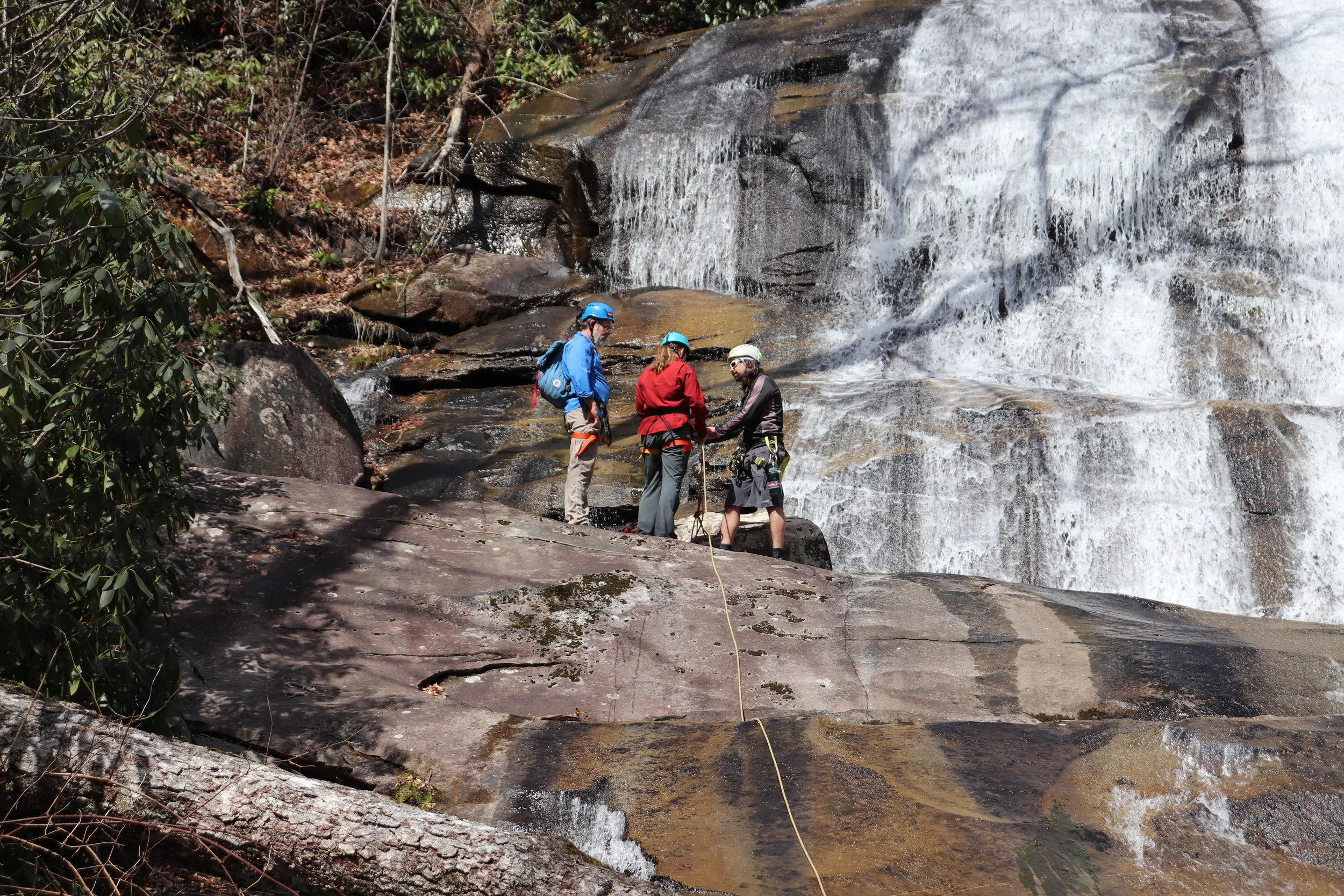By: Jayne Fought
When’s the last time you experienced the magic of the forest in the winter? For me it was last year. Right now, I’m full of anticipation and excitement about the amazing things the forest will show me this winter. As the days grow shorter and the thermometer starts to plunge, it’s common to feel the desire to hibernate. We get caught up preparing for family gatherings, shopping, attending holiday functions, we warm ourselves in the comfort of our homes, and we find fewer daylight hours to get outside. Resist!
Seriously, resist! Your mind, body, and spirit need you to get outside throughout the winter months. First, let’s talk about vitamin D. The human body produces vitamin D as a response to sun exposure. According to Medical News Today, “Vitamin D assists in promoting healthy bones and teeth, supporting immune, brain, and nervous system health, regulating insulin levels, supporting lung function and influencing the expression of genes involved in cancer development.” Medical professionals are finding that many people are deficient in vitamin D. It is possible to boost your levels by taking supplements, but simply getting a few minutes of sunshine each day is the most efficient way to raise your vitamin D levels.
Getting outside in the winter exercises your spirit of adventure in what can be a sedentary season. There might not be the beautiful “Wow!” of the spring ephemerals, but there are many subtle beauties, indeed. Once deciduous plants and trees lose their leaves, others, like conifers, enjoy their moment to shine and capture our attention. The Christmas ferns and club mosses demand to be noticed. Rhododendron, mountain laurel, and dog hobble provide a consistent green backdrop that lines the creeks and rivers. Native holly often stand on their own in silent watch. Even the white bark of the sycamore tree provides contrast to the landscape. The deciduous American beech tree holds onto its light brown leaves until the new leaves of spring push them aside.
Fan Club Moss and Ground Pine carpet the Winter forest in a stunning green color.
Studying the leaves of rhododendrons, known as “living thermometers” can tell us the temperature. At 32 degrees the leaves begin to droop on their stems. The leaves begin to curl like a cigar hanging from the stem when the temps reach the 20s and the leaves curl tightly looking like pencils as the temperatures fall into the teens.
This rhododendron “living thermometer” reads temps in the mid-20s.
Water and freezing temperatures combine to create an ever-changing series of icescapes on the creeks and waterfalls. Early morning ventures reward us with an amazing variety of icicles and ice formations. Some look like stalactites and stalagmites. Freezing fog can create rime ice or hoar frost. Both are quickly destroyed by the rising sun and warming temperatures. Needle ice commonly forms as moisture from the soil freezes as it comes in contact with the air.
Needle Ice on the Bracken Mountain Trail in Brevard, NC.
In the winter the forest opens up and provides longer-range views. The spaces feel larger and we can see nearby ridgelines, rock faces, and creeks that stayed hidden throughout the summer. These views can help us get a feel for the topography of the area and help us as we navigate. The trails become less crowded. The winter forest is peaceful, serene and quiet. That’s not only due to the beauty of winter, but the beauty of the off-season. Our forests are ours again.
Finally, a few notes on safety. Please check road conditions and/or closures before going out. Dress in appropriate layers and carry the 10 essentials. Use caution on any trail that is covered in snow or ice, and do not venture onto frozen bodies of water. Make yourself visible by wearing hunter orange during any hunting season. Stay on well-marked trails. Be aware of shortened daylight hours and quickly falling temperatures as daylight fades in the winter months.
Heart-shaped icecicles at Slick Rock Falls.










